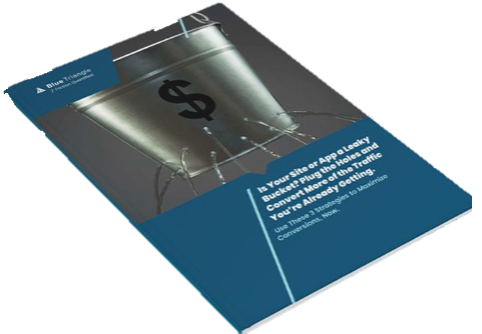3. Uncover potential improvements in satisfaction and cost savings in addition to driving more revenue.
This is crucial for non-retail brands, where outcomes aren't always measured in typical revenue metrics.
Like consumer banking, high switching costs prevent customers from easily jumping to a competitor when they get frustrated by digital friction. Focusing on earning customer loyalty and satisfaction becomes more important, as does creating efficiencies in service delivery.
"From a leadership point of view, we owed this to our customers," explains Shawn Sheely of US Bank. "Not just from that relationship, but that if we're going to do this, we need to do it right."
He cites an example of his team streamlining the onboarding experience and adapting it for people with disabilities while delivering benefits not only to all customers but also to the Bank.
"We found that we could get some of these experiences down to a third of the amount of content in a single screen and have it accessible and have a very quick result that got the customer to the next step. Three years later, we reduced costs by 70% and increased onboarding by the same amount. And completion rates went through the roof!"
Key Unlock #2: Align Teams Around Unified Objectives
One major challenge in optimizing digital experiences is aligning and focusing all teams on the same goals. Our experts emphasized the importance of testing and collaboration across teams to drive impactful changes.
Insights from our experts:
1. You're more than a designer; you're a team builder.
Catherine Gignac of American Eagle Outfitters notes the importance of team building for UX designers in large organizations.
She explains:
.png?width=940&height=788&name=Friction%20Show%20call-out%20-%20Pull%20Quote%20(5).png)
"When you show this in art review, and you wonder where all the feedback's coming from and everyone feels emotional and passionate, it's because you are literally the first person who's ever taken the work of all these dozens of people, the copywriters, the photographers, the site merchants, the people who designed the clothing and putting all those pieces together in the first comp of what they will actually see when it hits the site."
This fact can cause emotions to run high.
"That's why when people see things, they often tend to react, and it's passionate, and it's not ever really about the UX or about our work," explains Catherine.
"It's about a lot more than that, right? You get it being between two teams, trying to be the bridge, and you're representing all these other departments when you're putting their puzzle pieces together."
2. Bring the teams that impact digital experiences together, physically and metaphorically.
"Let's say that you work within a product team and you have designers, you have engineers," explains Shawn Sheely, "I think the best thing that you can do is get those engineers and designers sitting next to each other."
Doing so will help the teams understand each other and operate as a unified team.
Shawn describes it as "Getting them iterating and be willing to not just say this is my design, build it, but have clear roles. Designers are going to design; Engineers are going to code. But if you have a clear objective across your team as to what you want that outcome to be, what would be a great outcome for our customers."
Key Unlock #3: Listen to the Voice of the Customer
Understanding the customer's journey and struggles is crucial for creating frictionless experiences. Listening to the Voice of the Customer can help identify and address pain points effectively.
This requires talking to customers, deploying A/B testing to solve their challenges, and gathering extensive data.
Scott Smith explains:
.png?width=940&height=788&name=Friction%20Show%20call-out%20-%20Pull%20Quote%20(6).png)
He continues:
"Who's searching on Google, and what are they searching for? And how do we make sure that we're providing them with the right experience once they do land within our web products and web experiences?"
Catherine Gignac noted that her UX team and the Director of Architecture partner with the UX architecture team to perform "archaeological digs" to find where the greatest friction points are.
"They look at our voice of the customer inputs, they look at competitors," Catherine explains. "What should we be chasing after? What do we have in our own house that is 'friction' or problematic? They unearth it."
Catherine notes that there are several different digital analytics tools designed to uncover friction points and identify where customers encounter friction in their journeys.
(Check out how Blue Triangle helps you identify your highest-converting paths, create more of them, and pinpoint where users struggle.)
Finally, Vijay Jayaraman points out that it comes down to helping customers solve a particular challenge.
.png?width=940&height=788&name=Friction%20Show%20call-out%20-%20Pull%20Quote%20(7).png)
Are you struggling to get your leadership to prioritize and fund eliminating friction in your digital experiences?
Use the three unlocks from these experts to elevate the importance and value of frictionless experiences. They're proven to help secure funding and make frictionless a priority.
.jpg)






-1.png)

